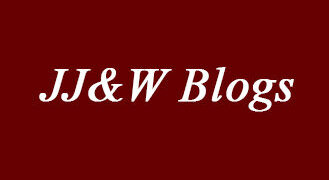It is a time for new beginnings, fresh thinking, purging files and finding different ways of doing things. If you’ve been managing your communications function for a while — or, if you’ve recently inherited the position and found yourself asking, “why are we doing what we’re doing?” – it is a good time for an audit.
The word “audit” is a bit daunting, but really what we’re talking about is an evaluation of what you’re doing now to see if it is:
- in line with your organization’s goals… your communication department’s goals should be directly aligned with those of your organization
- meeting the needs of your stakeholders, because if it isn’t, then why are you doing it?
- driving knowledge and behaviors so that stakeholders act on what has been communicated
A communications audit examines what you are doing now to assess what’s working and not working for your critical audiences. It helps focus on communications vehicles and messaging that has the greatest impact.
JJ&W asks the following questions when conducting a communication audit:
- What does your organization’s communication system look like? We look at how communication is flowing from the top down, the bottom up and across the organization (laterally). Do you have a good balance of one-way and two-way communication tools?
- What audiences are you reaching with each communication tool? Have you asked these audiences how they would like to be communicated with, or are you just bombarding them from all directions and hoping something sticks?
- Have you accounted for the changing demographics of your target audiences? If you’re a utility who is geared toward communication with the senior generation, have you thought about how you might change things up to reach the millennials who are becoming your customers – and will be with you for a long time to come? Are you communicating in the right languages (not actual languages but idioms of that generation)?
- Are the key messages resonating with your audiences? Are those messages driving understanding and behavior?
- How effective are your digital communication tools, including social media? Are your target audiences using and responding? Are they clear on where to get their “need to know” vs. their “nice to know” communication?
- Do all your communications look like they come from the same organization? Do they have an easily-recognizable family look & feel that immediately lets audiences know where to find information?
- Have you gotten the perspectives of more than the senior management team? Have you talked to the front-liners who may not be sitting at desks with computers to find out how, and if, they’re getting the communication they need to do their job?
And if you want to leverage the real power of communications… how about some questions to probe the culture at your organization? Do people perceive they can “fail forward” or are they fearful of taking risks that might result in punishment? Do they feel communication is transparent, or does leadership hold things “close to the vest?”
This is an excellent time to clean out your “communications junk drawer” – get rid of anything that’s not working and fill in the gaps with effective methods and messages that are right for the stakeholders you are trying to reach.
Robin Schell/rschell@jjwpr.com /603/770-3607.
